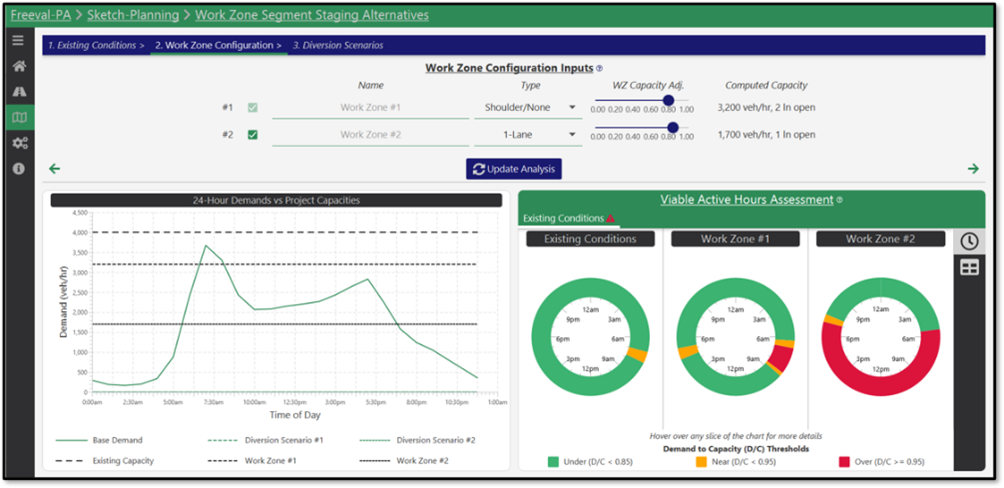Lane Reservation System

As part of its Transportation Systems Management and Operations (TSMO) vision for a less congested, more reliable roadway network, PennDOT is developing the Lane Reservation System – a tool to ensure crews are performing road work at the most appropriate times to minimize impacts to the traveling public.
How Does It Work?
The Lane Reservation System is often compared to online reservation tools like OpenTable, which can be used for reserving a table at your favorite restaurant. First, utilizing a new interface built into PennDOT’s Advanced Traffic Management System (ATMS) platform, a user will input information about the work zone, including its location, time, duration, and type of work (shoulder, single lane, multiple lane, or full closure). The system will then determine the work zone’s effect on the roadway’s capacity, comparing it to traffic volumes expected on the roadway for the given date and time.
If the system determines that a work zone request will cause unacceptable levels of traffic congestion at the time requested, the system will instead direct the user to schedule the work for more appropriate times. However, if the system determines the work zone will not have a significant impact on traffic or conflict with other work zones, the request will be approved. Ultimately, reservations will be able to be made by PennDOT and its contractors, municipalities, utility companies, and other entities performing work on the Pennsylvania’s roadways.
In addition to processing the reservation request itself, the new tool will be used for field verification through a mobile device. For the first time, workers will no longer need to contact a PennDOT Traffic Management Center (TMC) to report work zone information at the start and end of a project, or when adjustments occur in the field during the project.
Finally, the Lane Reservation System will be able to organize the data it collects in a standardized format, and make it available to numerous industry partners. In addition to real-time applications, such as 511PA, Google Maps and Waze, the data could also be utilized by research entities as well as future connected and automated vehicle applications.

What Are the Benefits?
The primary purposes and benefits of the Lane Reservation System are reducing work zone conflicts and vehicle congestion, improving safety for road users and work crews, and improving traveler information. While phase one of the system will focus on the Pennsylvania’s limited access roadway network, the software will ultimately be capable of capturing events on all PennDOT and local roads.
The system will realize several efficiencies by relying on software and tools already familiar to PennDOT. The system is being built on PennDOT’s existing Advanced Transportation Management System (ATMS) platform, used for command and control of all PennDOT intelligent transportation systems equipment. It also interfaces directly with PennDOT’s Road Condition Reporting System (RCRS) and FREEVAL-PA, a predictive work zone traffic analysis tool. By allowing field verification using a mobile device rather than requiring crews to keep PennDOT TMC staff appraised of a work zone’s status by phone, TMC staff can focus on situational awareness rather than data entry.

Innovation in Motion
The Lane Reservation System concept was first introduced in 2016. By learning from lane reservation applications successfully deployed in other states, PennDOT and the Pennsylvania Turnpike Commission (PTC) were able to gain the support necessary to pursue this idea in Pennsylvania.
While interest in the lane reservation idea initially expanded to other nearby states through PennDOT’s and the PTC’s participation in the Smart Belt Coalition, the pandemic and resulting financial hardships put a full stop to the efforts. As a result, both the PTC and the Ohio Turnpike Commissions were unable to continue with the project.
PennDOT, however, confident in the great opportunities the Lane Reservation System will offer Pennsylvania, moved ahead. Retooling of the project scope established a project that is split-funded between PennDOT and the federal Advanced Transportation and Congestion Management Technologies Deployment (ATCMTD) grant the project received prior to the pandemic, and will incorporate a number of the preliminary documents and requirements previously developed in collaboration with the Pennsylvania Turnpike Commission.
More Information